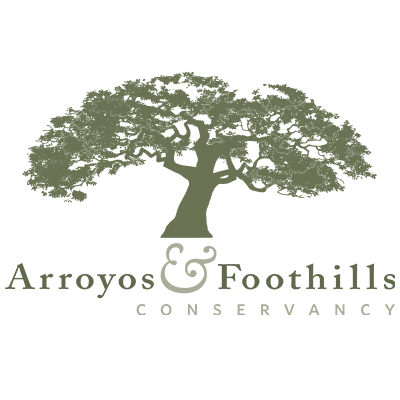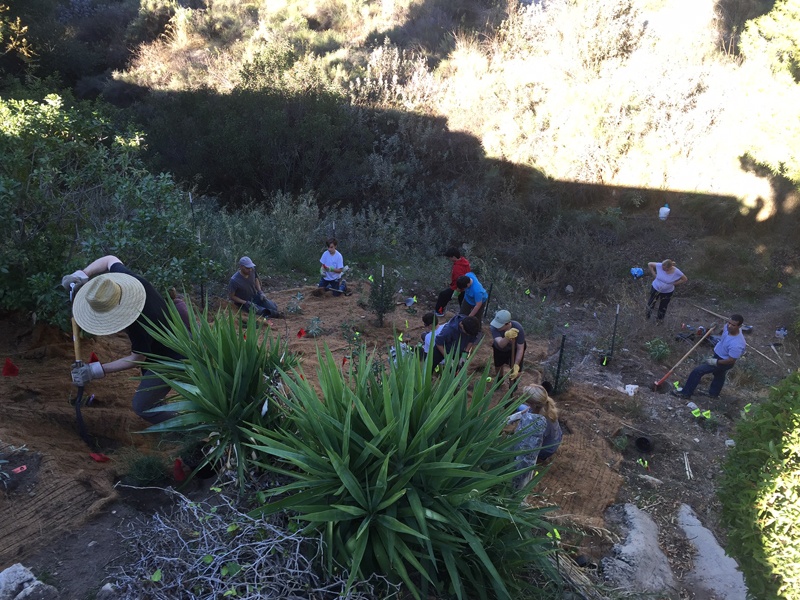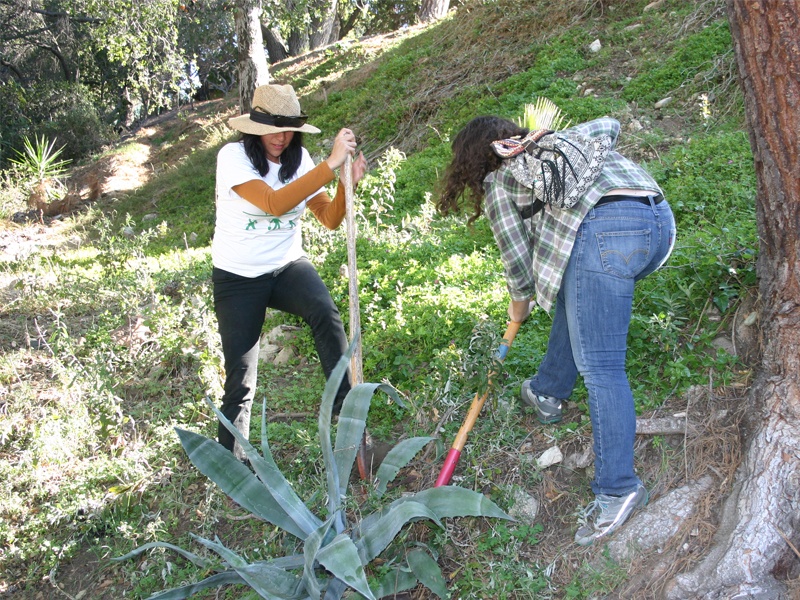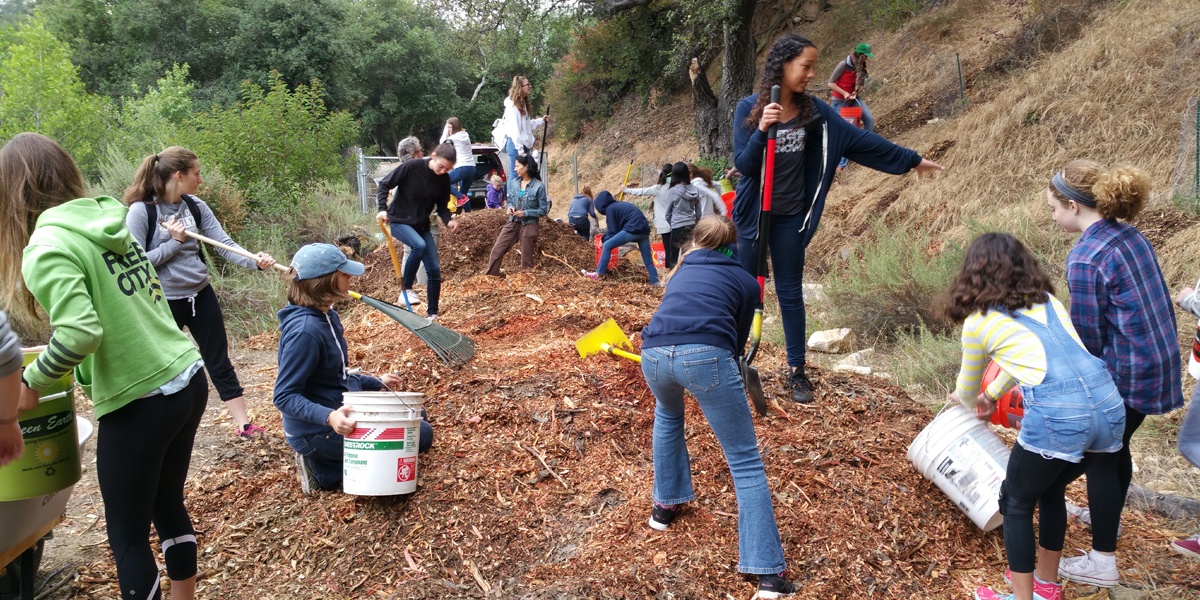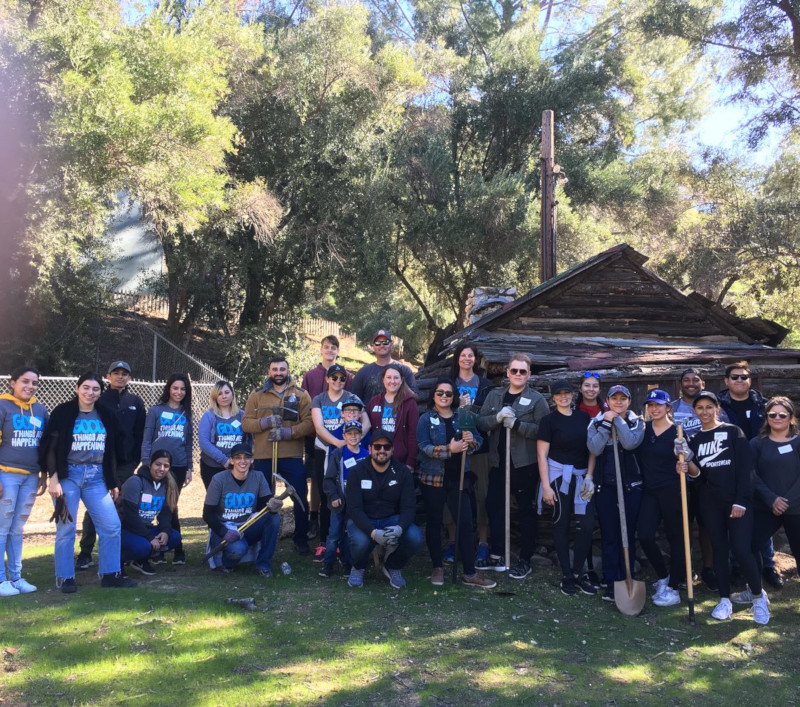Fire Fuel Reduction
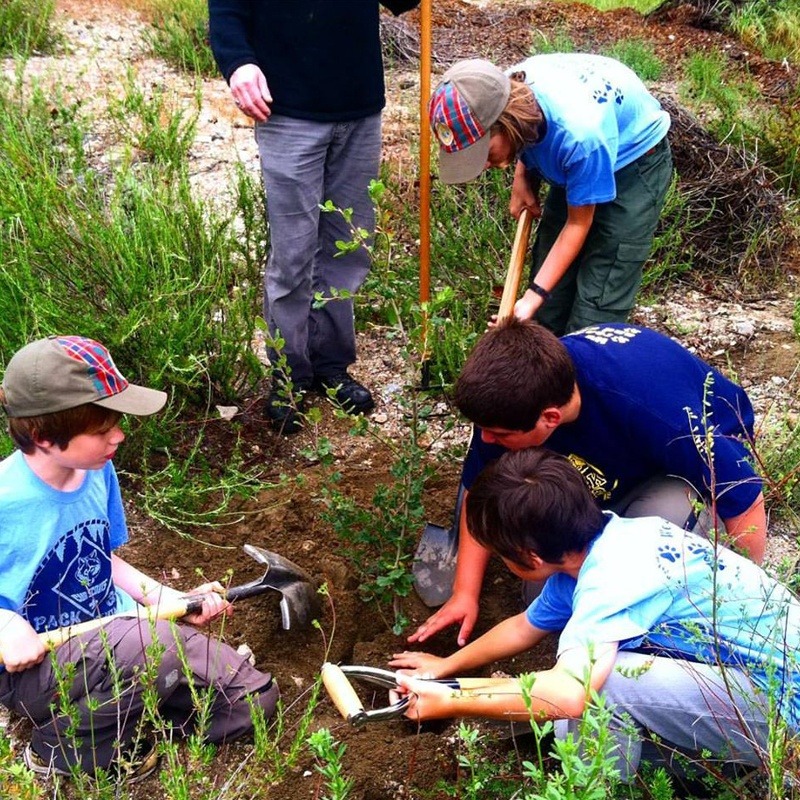
Property Management plans for each AFC property include fuel modification as part of the overall habitat restoration plan for that property. AFC uses a long-term, strategic approach to fire fuel reduction on all properties. This approach is designed to reduce future work by removing highly flammable non-native species and encouraging local fire resistant native species to return.
AFC works with CalFire and the Department of Agricultural Commission to establish defensible space on its properties in accordance with their guidelines. AFC also works with adjacent neighbors to provide resources and assistance with their fuel reduction obligations. At Cottonwood Canyon, AFC partnered with the California Conservation Corps to provide a demonstration fire hazard reduction day on a neighbor’s property. At the Rosemont Preserve, Friends of the Rosemont Preserve partnered with FormLA landscaping to remove invasive plants and stabilize a neighbor’s slope with native plants.
Los Angeles County encompasses a land area of 4,000 square miles. 47% of this area is mountainous, while the remainder consists of alluvial valleys, coastal plains, and high desert. The mountains ranges within the County run from east to west. The main canyon drainages flow north and south. This natural topography has created airflow patterns linking the desert area with the Pacific Ocean. During periods of high meteorological pressure zones over the deserts, hot, dry, northerly winds known as Santa Anas follow these paths. The high frequency of fires in these areas has earned them the name fire corridors. Prominent fire corridors in Los Angeles County include Malibu, Arroyo Seco, and San Gabriel Canyons.
The vegetative ecosystem present on each AFC property and most of the watersheds in Los Angeles County is chaparral. The term applies to the shrubby vegetation seen on both coastal and inland hillsides. Chaparral can be separated into two types; soft chaparral (usually called coastal sage scrub) and the taller hard chaparral. Chaparral is dominated by evergreen and drought deciduous shrubs 1 to 15 feet tall. Most of these plants are recognized by their tough, leathery leaves that reduce water loss in the dry climate. Many chaparral plant species contain volatile oils which produce a strong odor and increase their flammability. Common examples include various species of Ceanothus, Manzanita, Sage, Sumac, Toyon, and Chamise. Chaparral ecosystems are very efficient at controlling erosion and protecting watersheds. The deep root systems of these plants help to stabilize slopes and allow them to thrive in the dry Mediterranean climate of Southern California. Chaparral plant communities depend upon fire as an integral part of their life cycle, and periodic burning is essential in order for these communities to rejuvenate. As unburned plants grow older, the amount of dead material increases dramatically. By age 50 as much as 50% of an individual plant may be dead.
Where chaparral plants are uniformly old, and cover a broad area, fires tend to be large and devastating.
If you live adjacent to an AFC property and would like to find out more about our fire hazard reduction program, please contact Tim Martinez, [email protected], (626) 808-7964.
Helpful resources to stay safe before, during, and after a fire:
Before: Download LA County Fire’s Ready! Set! Go! Wildfire Action Plan, and watch LA County Fire’s video, “Harden Your Home”.
During: Check for Road Closures that might impact you.
After: Follow Ash Clean-up and Food Safety instructions.
Sources:

